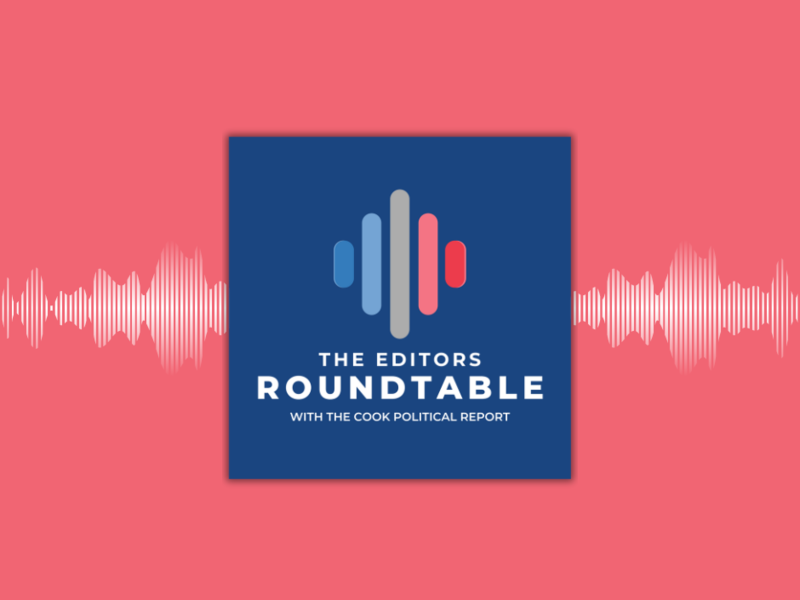
There’s something of a consensus forming that the 'easiest' or least risky electoral path for the Democratic nominee in 2020 is to reconstruct the so-called "Blue Wall" in the industrial midwest. If the Democratic nominee wins every state Hillary Clinton carried in 2016, plus Wisconsin, Pennsylvania and Michigan, that Democrat would win 278 electoral votes — eight more than the 270 needed to win. Just as important, it means that Democrats wouldn’t need to sweat Ohio or Florida. They can lose those big, electoral-vote-rich states, and still have enough to win the White House.
The Blue Wall
This Blue Wall path also means Democrats wouldn’t have to win in Iowa either. Which, is good news if you are a Democrat looking at the latest polling from the Hawkeye State. Taken January 30-February 2 (a year out from the 2020 Caucuses), the Emerson College poll (a combined IVR/online survey) finds that despite the president’s middling job approval ratings — 46 percent approve to 48 percent disapprove — Trump beats almost every potential 2020 Democrat with between 50 and 55 percent of the vote. In 2016, Trump carried Iowa with 51 percent. Up against the better-known Democrats, Trump bests Elizabeth Warren 52 percent to 48 percent, nudges past Sanders 51-49 percent, but narrowly trails Joe Biden 49 percent to 51 percent.
But, if Iowa looks tough for Democrats, Michigan is looking pretty good. Trump carried the Wolverine state in 2016 by less than 11,000 votes. But, a recent WDIV/Detroit News poll finds Trump’s job approval in the state a bleak 38 percent favorable to 53 percent unfavorable. The Detroit Free Press’ Todd Spangler also highlights a key point: "General Motors has laid off thousands of employees counter to what Trump promised when he won in 2016.. and [h]e’s also running into trouble in terms of getting congressional approval for a new North American trade agreement to replace NAFTA, another key campaign promise that helped energize a base of white, working-class voters in Michigan at a time when Democratic enthusiasm seemed at a low point."
More ominously for the president, his job approval rating among independent voters in the state was just 43 percent, with 50 percent disapproving. EPIC/MRA pollster Bernie Porn, who founded the non-partisan Michigan-based polling firm more than 25 years ago, told me that even a motivated GOP base will get Trump, at best 43 percent of the vote. The rest needs to come from independents and/or disaffected Democrats.
But, but, but, didn’t all the polls in 2016 show Hillary winning the state? Why should we trust the polls now? It’s a fair question. The RealClear Politics average of Michigan polls gave Clinton a 3.5 percent advantage going into Election Day 2016. EPIC/MRA never showed Trump ahead in any of their polling. Their final pre-election poll had Clinton over Trump 42 percent to 38 percent.
EPIC/MRA’s pollster, Bernie Porn argues that polling didn’t pick up the tremendous gap in enthusiasm for Trump and lack thereof for Clinton. The results in Michigan in 2016, he told me in a recent interview, were “as much against Hillary Clinton as it was for Trump.”
Today, Porn and others argue that the enthusiasm gap that plagued Democrats in 2016 wasn’t there in 2018, and is not likely to be there in 2020 either. Unless, of course, Porn notes, "Democrats run a terrible candidate." An analysis of the 2018 vote in Michigan by the Detroit Free Press found that turnout in the state was “higher than other non-presidential election years going back decades. And that turnout was higher everywhere — including rural areas and other areas where Trump did well. But the turnout was particularly notable in some big Democratic areas." In other words, Trump juicing his base only works if Democrats once again fail to be inspired to vote.
In Wisconsin, things look murky for Trump, but not as bleak as they do in Michigan. A Marquette University poll in mid-January found Trump’s job approval underwater by 8 points (44 percent to 52 percent). More dangerously, however, almost 50 percent of voters in Wisconsin (49 percent) say they’d definitely vote against Trump in 2020, while another 8 percent said they’d probably vote against him. Meanwhile, just under a third of Wisconsin voters (27 percent) say they will definitely vote for the president in 2020 with another 12 percent saying they’d probably support him next year.
But, of course, Wisconsin was another one of those states where the polling was wrong in 2016. The final RealClear Politics Average in 2016 showed Clinton leading Trump by 6.5 percent going into Election Day. Trump won the state by less than one point. But, what Trump had in 2016, solid enthusiasm from his base, plus tepid support for Clinton among Democrats, is, at this point at least, no longer the reality. The Milwaukee Journal’s Craig Gilbert, the keenest observer of political trends and elections in the state, dug through the Marquette poll too and found Democrats more thoroughly lined up against Trump than Republicans are unified in support of the president. In a piece he wrote in late January, Gilbert wrote that even if "soft" Trump supporters unite around him in 2020, they "aren’t really numerous enough to put him over the top. (He would probably still have to convert some people who currently disapprove of the job he's doing.) But if these soft supporters don’t unite behind him, that would kill his hopes of winning the state. And at this moment, many of them appear to be in play." In other words, Gilbert concludes, "Trump won Wisconsin in 2016 despite high negatives — precisely because he won the votes of many voters who had qualms about him. But he also won it by the slimmest of margins. Now that he is president, he has fiercely mobilized the opposition."
Unfortunately, we don’t have much recent polling in Pennsylvania. But, a January Morning Consult survey pegged Trump’s job approval in the state at -10, similar to his showing in Virginia. But, Pennsylvania is another state where the polling was off in 2016. Pollsters in the Keystone state, like their colleagues in Michigan and Wisconsin, point to an underestimation of enthusiasm for Trump as a key factor in their miss.
In 2018, however, it was Democrats who enjoyed a solid enthusiasm advantage. Democratic Sen. Bob Casey crushed Clinton’s margins in the Philadelphia suburbs, while not losing as badly as Clinton did in the more rural/exurban parts of the state. For example, Clinton carried suburban Philadelphia’s Bucks County by just under 3,000 votes. Casey won it by 41,000. Meanwhile, while Trump carried York county in the southeastern part of the state by more than 60,000 votes in 2016, Republican Senate candidate Lou Barletta won there by just 26,000 votes.
Ambivalent voters who disliked both presidential nominees. Tepid enthusiasm from Democrats for their nominee. Tremendous support and energy from Republicans for theirs. Those were the three most important factors in Trump’s success in the three blue wall states. As we look to 2020, we know that Trump continues to enjoy solid support from his base, but the Democrats are at least equally energized to get out and vote against him. This leaves the battle for the 'ambivalent' voter as the most critical piece of the 2020 strategy. Trump has done little in his tenure in office to woo those not already in his base. The only question now is if Democrats will nominate a candidate who can appeal to these voters, or if they will choose a flawed candidate who will, once again, force these voters into having to decide between the "best-worst-choice."









Subscribe Today
Our subscribers have first access to individual race pages for each House, Senate and Governors race, which will include race ratings (each race is rated on a seven-point scale) and a narrative analysis pertaining to that race.